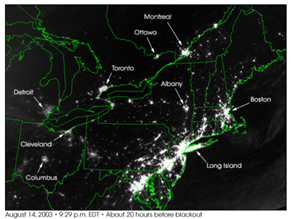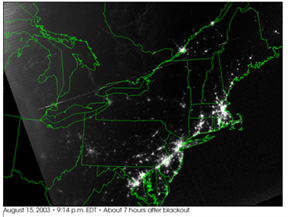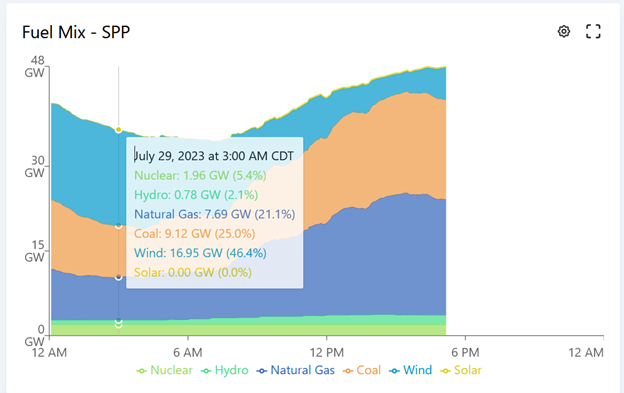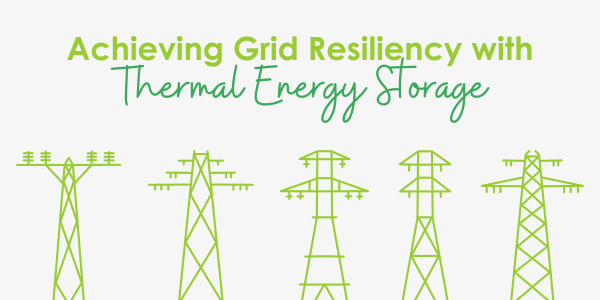
This week I’m focusing on the concerns expressed by members of the National Association of State Utility Consumer Advocates, NASUCA, which met in parallel with NARUC in Austin, TX, a week before last. The topics of concern include outage risk, high prices, and related energy poverty.
Outage Risk
In the short term, this year or next year, I can only repeat what the experts are saying. Jim Robb, President of the North American Electric Reliability Corporation (NERC), said the bulk power system has seen steady improvement [in reliability]. At the same time, the risk is “terrifying” due to peak load growth and the generation mix (see inverter section from last week).
Mr. Robb said heat domes cover larger areas for longer periods. To that, I would add, except here in the upper Midwest, where it has been over a decade since we’ve had a heat wave. As documented on June 6, 2024, the Almanac in Jeff’s brain is proven accurate per a web search of “major Midwest heat waves in history,” which returns links to news articles featuring the major heat waves of 1988 and 1995. As stated in the June 6 post, I maintain that the recurrence of such heatwaves in the Midwest would severely test grid resources today.
Looking back, NERC was formed as a result of the great 2003 Northeastern U.S. and Canadian blackout of 2003. NASA images showing the impact of the blackout from space. Backup generators and maybe nascent microgrids kept some lights on, but lights aren’t significant loads. Trees in calm conditions triggered the avalanche that left 50 million people without power for thirty hours.

 I believe Mr. Robb’s concern is that when NERC was formed, the grid was very different, and, in my view, it will get very, very different in the coming decade with thermal retirements and electrification – major risks!
I believe Mr. Robb’s concern is that when NERC was formed, the grid was very different, and, in my view, it will get very, very different in the coming decade with thermal retirements and electrification – major risks!
Decline of Thermal + Rise of Wind = Risk
Stacy Dore, Chief Strategy and Sustainability Officer with Vistra, the nation’s largest combination generator and retailer of electricity, elaborated, saying thermal power plants are retiring too fast and not being replaced.
Lanny Nickell, Chief Operating Officer for the Southwest Power Pool, “We are seeing risks like I have not seen in my career.” He said that in the last 7-8 years, 8 GW of thermal power generation have retired from the SPP grid, while 24 GW of wind has been added. The result is a 30X increase in loss of load expectation[1] and a 500X increase in unserved energy risk[2] (you read that right). Think of loss of load as the risk of losing power, and unserved energy as the lost load multiplied by the hours of darkness[3]. To demonstrate wind’s impact on reliability, Mr. Nickell said SPP has 32,000 MW of wind generation on their grid, and on June 6, 2023, that 32,000 MW of generators produced 110 MW. You read that right.
Ms. Dore added that wind and solar generation decline as peak loads build. She said the wind blows hard at the outset, and when the storm bears down and high-pressure sets in, wind generation drops rapidly. Solar generation isn’t there in the mornings and dies off as the sun sets. But even for economic reasons, wind blows harder at turbine hub height at night than during the heat of the day when peak demand occurs. Below is a screenshot of the SPPs resource mix from last Saturday. It is not unusual for wind generation to drop by 50-60% from nighttime to peak daytime demand periods. Check it out here[4]. What is the phenomenon behind this? I covered that here.
 I’ve gotten feedback on my writings that I’m anti-renewable. No. I’m pro-reality. Folks responsible for keeping the lights on and protecting public safety agree on this.
I’ve gotten feedback on my writings that I’m anti-renewable. No. I’m pro-reality. Folks responsible for keeping the lights on and protecting public safety agree on this.
Federal Regulation
Ms. Dore took what I would call shots at the EPA. She said, “The EPA should be required to do a Reliability Impact Statement” while utilities toil to produce environmental impact statements for the EPA.
We’re big on accountability, but it’s lacking with the EPA, which dictates the composition of our power-generating and automobile fleets through backdoor methods to eliminate specific resources. On multiple occasions, SCOTUS has ruled against EPA overreach to regulate CO2 emissions, so EPA backdoors it by driving other emission limits to impossible land. These limits need to be legislated through the political process where there is accountability and balance with other things, like affordability. Next up:
Energy Poverty
I demonstrated in March and April that renewable power generation plus storage technologies cost multiples more than thermal power generation until, for example, natural gas prices rise by 300%. Those points were hammered home in the NARUC discussions.
If you ask me, “environmental justice” misses the point. The folks who need environmental justice need affordable, reliable power more than anything else by a factor of 1e6.
NASUCA’s President, Chris Ayers, said policymakers want to decarbonize, but they need education on the pace and depth of decarbonization which is rapidly driving up prices. They and I are doing our best to deliver this message. He believes we are reaching a tipping point where public support will go the other way – carbonization.
Joe Daniel, Manager of Carbon-Free Electricity with Rocky Mountain Institute, stated that one in four Americans have difficulty paying their utility bills. One in six are behind on their payments. A six percent energy burden (total cost of living) is the tipping point where these folks start to curtail medication, food, and other expenses. Why? Because they can lose their apartment or even their children if their utilities are disconnected, which can lead to child-endangerment charges.
Mr. Ayers calls affordability a matter of life or death, and he is correct. He said, “I don’t see anything putting downward pressure on rates. Lots of upward pressure because lots [of infrastructure] needs to be built.” Hey, but the levelized cost of electricity from solar and wind is less than electricity generated from thermal power plants!
Ok? Before people go off on rants to shut down depreciated (paid-for) thermal power plants, think about those who can’t afford the transition. This makes me very hot –very, very hot, and it is a big reason I write this blog.
Achieving Grid Resiliency with Thermal Energy Storage
FREE Webinar Presented by Michaels Energy
I invite you to join our webinar, Achieving Grid Resiliency with Thermal Energy Storage. By attending this virtual webinar, you will discover how Thermal Energy Storage (TES) for commercial and industrial applications can significantly reduce daily peak load on the grid and provide a cost-effective alternative to Lithium-ion batteries. The results of TES shifting load and creating efficiency will be shown through case studies and examples, offering valuable insights to achieve grid resiliency.
Speakers Stan Nabozny and Jeff Ihnen will introduce the physics behind TES with phase change materials (PCMs) and review multiple case examples and applications, including case studies with metered results and visual reinforcements. Benefits for utilities and commissions will be discussed in the case examples presented. A white paper will also be provided that will support continued learning and understanding of TES.
Date: Wednesday, August 16, 2023, from 2:00–3:00 P.M. EDT.
Register Today
To sign-up for the free webinar, click here.
[1] Per the California Public Utilities Commission, LOLE equals the expected number of loss-of-load days with events, regardless of event length, in a given year.
[2] Unserved energy is the outage in GW times the duration of the outage.
[3] https://www.brattle.com/wp-content/uploads/2021/08/The-Economics-of-Resource-Adequacy-Planning-Why-Reserve-Margins-Are-Not-Just-About-Keeping-the-Lights-On.pdf
[4] On Sunday, July 30, 2023, the ratio is 1:7 on to off-peak production.






